Holidays in Sirmione on Lake Garda
Sirmione, a picturesque peninsula at the southern end of Lake Garda, is one of Italy’s most popular travel destinations. Whether you want to explore the impressive Scaliger Castle, relax in the thermal springs, or simply enjoy the stunning views of Lake Garda – this charming town has something for everyone.
The pearl of Lake Garda
Where is Sirmione located?
Sirmione is situated on the southern shore of Lake Garda in the Lombardy region. The peninsula extends about four kilometres into the lake, offering a unique combination of breathtaking nature, historical charm, and Mediterranean flair. Due to its special location, it is easily accessible from cities like Verona and Brescia.
Why is Sirmione so special?
The beauty of the peninsula lies in the perfect mix of history, nature, and relaxation. Whether the historic old town, Scaliger Castle, or the famous thermal springs – Sirmione has something for everyone. The peninsula also offers spectacular panoramic views of Lake Garda and is an ideal place to unwind.
Top attractions
Scaliger Castle – The landmark of the city
The impressive Scaliger Castle, or "Rocca Scaligera", is the most famous landmark and a must-visit for every traveller. This medieval fortress was built in the 13th century by the Della Scala family and served as both a defensive structure and a harbour.
- Highlight: The castle tower offers a breathtaking view of Lake Garda.
- Tip: Visit the castle early in the morning, as it is a popular photo spot for visitors from all over the world.
The Grottoes of Catullus – A journey into antiquity
At the northern end of the peninsula are the remains of a Roman villa, known as the "Grotte di Catullo" (Grottoes of Catullus). The ruins date back to the 1st century BC and are an impressive example of Roman architecture. The site offers an archaeological area with spectacular views of the lake.
The Thermal springs - Pure relaxation
The spa town is famous for its hot sulphur springs, which were already appreciated in ancient times. Today, visitors can relax in luxurious thermal spas such as the Terme di Sirmione. The baths impress with a fantastic lake view and modern wellness offers.
The Historic old town – A walk through history
Sirmione’s old town is a true treasure. Together with Piazza Carducci, the main street Corso Vittorio Emanuele forms the heart of the old town. Inviting cafés, gelaterias, shops, and elegant boutiques line the streets. Worth visiting as well are Santa Maria Maggiore Church, located on a hill in the eastern part of the city and San Pietro in Mavino Chapel, a small historic church.
Activities in the surroundings
- Boat tours on Lake Garda: Various providers offer excursions to nearby towns such as Desenzano and Lazise.
- Beaches and swimming spots: The peninsula has several beaches where visitors can relax and enjoy the crystal-clear water. The most popular ones are Jamaica Beach and Spiaggia Lido delle Bionde.
- Cycling and walking along the promenades: With stunning views of Lake Garda.
Practical tips
Best time to visit
The best time to visit the beautiful peninsula in the south of Lake Garda is in spring (April to June) and autumn (September to October). During these months, temperatures are pleasant, and visitor numbers are moderate.
Getting to Sirmione
- By car: The town is close to the A4 motorway (Sirmione exit). Parking is available but often fills up quickly.
- By train: The nearest train station is in Desenzano del Garda, from where buses run to the peninsula.
- By boat: There are ferry connections from many towns around Lake Garda.
Restaurants & specialities
The local restaurants serve traditional Italian cuisine with a focus on fresh fish from Lake Garda.
Frequently asked questions
How much time should you plan for Sirmione?
A day trip is enough to see the main attractions. However, if you want to enjoy the thermal baths or explore the surroundings, 2-3 days are ideal.
Is Sirmione family-friendly?
Yes, Sirmione is family-friendly. The thermal baths and beaches are particularly great for children.
Can you visit Sirmione in one day?
Yes, a one-day visit is possible, but it can get crowded during peak season. Staying overnight allows for a more relaxed experience.
-
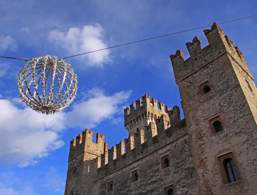 Famous castle in Sirmione at Lake Garda
Famous castle in Sirmione at Lake Garda
-
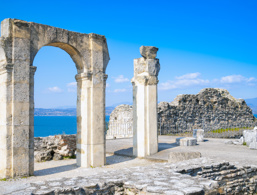 Cultural attraction in Sirmione
Cultural attraction in Sirmione
-
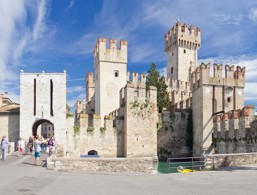 Scaliger Castle
Scaliger Castle
-
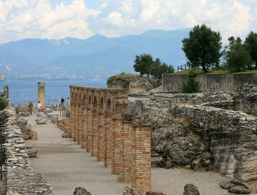 Roman monument in Sirmione
Roman monument in Sirmione
-
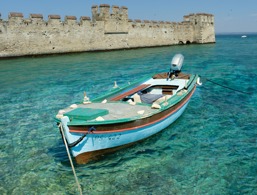 Sirmione
Sirmione
-
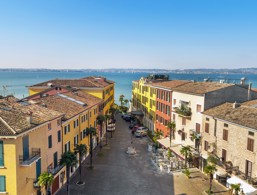 View to Lake Garda
View to Lake Garda
-
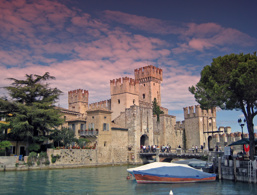 Scaliger Castle in Sirmione
Scaliger Castle in Sirmione
-
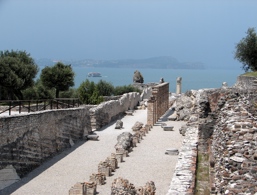 Grotten des Catull
Grotten des Catull
-
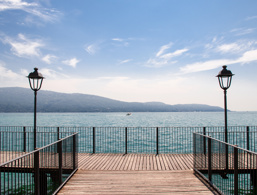 Holidays in Sirmione
Holidays in Sirmione
-
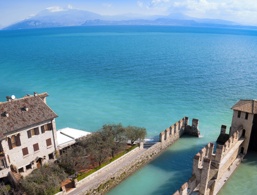 Castel in Sirmione
Castel in Sirmione
-
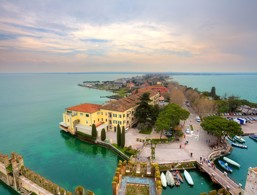 View on Sirmione from the castle
View on Sirmione from the castle
-
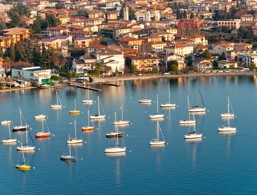 Boats at the harbor
Boats at the harbor
-
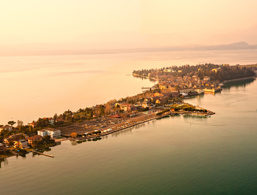 Promontory of Sirmione
Promontory of Sirmione


